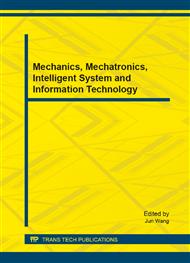p.601
p.606
p.611
p.615
p.620
p.627
p.633
p.638
p.642
The Analysis of Research Frontier and Hot Topics about User Behavior in Network Community Based on Mapping Knowledge Domain
Abstract:
By using mapping knowledge domain, this paper analyzes the literature from 2005 to 2013 of user behavior in network community, the results show that with the development of the Internet and the maturity of the social media, the research in this field is increasing. Now, the papers mainly focus on the study of the user behavior, virtual community and online community, and the chief methods are structural equation model and social network analysis, also, they have a deep analyze on trust as an influence factor. First, to have an overall understanding of the research situation, this paper analyzes three aspects as follow: the information of the papers, the author of the papers and the research institutions, second, it focuses on the research frontier and the cited references.
Info:
Periodical:
Pages:
620-626
Citation:
Online since:
August 2014
Authors:
Price:
Сopyright:
© 2014 Trans Tech Publications Ltd. All Rights Reserved
Share:
Citation:


